Introduction to the Puma Cat
Ever heard of the cougar cat? This small feline, also known as jaguarundi, is an intriguing species that piques curiosity. With remarkable fur and adorable puppies, the study of the puma cat is of great importance for us to understand more about the world’s fauna.
This female of the Felidae family can be found mainly in the south, where her unique characteristics have been observed and studied. But why focus on this particular feline? Simply because every detail in their behavior and physique allows us a broader view of nature and its diversity. So let’s dive into the world of cougar cats to learn more about these fascinating creatures!
Physical Characteristics of the Puma Yagouaroundi
Detailed Description
The Puma Yagouaroundi, also known as the cougar cat, is a feline species that stands out for its unique physical characteristics. This animal has an elongated and slender body, with short legs and a long tail that can reach half of its total length.
Males can weigh between 5 and 9 kg, while females usually weigh between 3 and 5 kg. The body of this feline can measure 65 to 80 cm in length, not counting the tail, which can add another 45 to 60 cm to the total size.
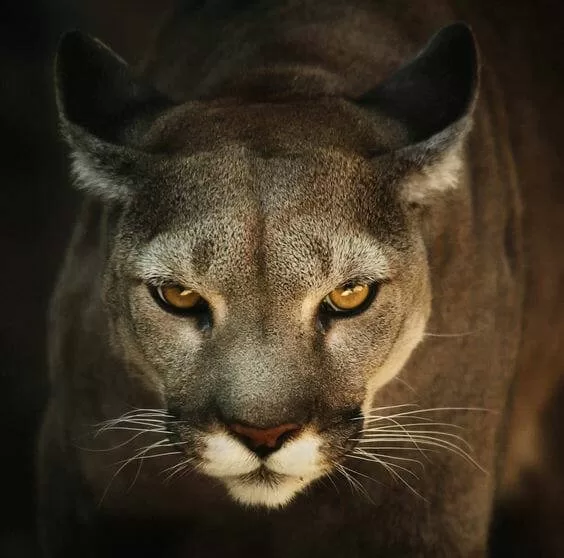
Comparison with Other Feline Species
Compared to other feline species, the cougar cat is smaller in size. For example:
- Lions: Weigh between 120 -250 kg
- Tigers: Weigh between 100 -306 kg
- Jaguars: Weigh between 56 -96 kg
- Puma Cat (Puma Yagouaroundi): Weigh between 3 -9 kg
As you can see from the table above, the cougar cat is significantly smaller than other big cats.
Coat and Color Variations
The puma cat has a short coat that is soft to the touch. The color of its coat varies greatly depending on the geographic region where it is located. In some regions they are mostly gray or dark brown; in other areas they may be reddish or even black.
Here are some possible color variations:
- Dark grey
- Light brown
- deep red
- solid black
So there you have it! These are the details of the physical characteristics of the cougar cat. As you can see, this little cat has many interesting features that set it apart from other big cat species.
Behavior and Evolution of the Puma Cat
Behavioral Patterns
The puma cat, also known as the puma, has a fascinating behavior. These cats are solitary and territorial, which means that each individual occupies a specific area and avoids other cougars whenever possible. An exception occurs during the mating season, when males and females meet.
- They are efficient night hunters.
- They prefer to live in areas with dense vegetation to hide.
- They are excellent jumpers thanks to the strong musculature of their hind legs.
Historic evolution
The evolutionary history of the cougar cat is complex and intriguing. Genetic studies indicate that they share a common ancestor with small cats around 6 million years ago. Since then, they have undergone numerous adaptations to survive in varied environments.
- Evolved long canines to kill larger prey
- They have adapted to varied habitats: tropical forests, deserts and mountains
- Learned to swim to cross rivers or lakes in search of food
| Adaptations | Function |
|---|---|
| long canines | hunt big prey |
| strong muscles | jump great distances |
Notable Evolutionary Adaptations
Among the cougar cats’ most notable adaptations are their extraordinary physical abilities – they can run at speeds of up to 80 km/h! In addition, their camouflage ability is impressive – their brown fur blends in perfectly with the environments in which they live.
Imagine being able to leap up to 5 meters vertically in the air? This is something a cougar cat can do with no problems!
In conclusion, understanding the behavior and evolution of the cougar cat allows us to appreciate these amazing animals even more. Every aspect of their behavior or physical trait has a reason behind it – whether it’s to help them hunt better or survive in different habitats.
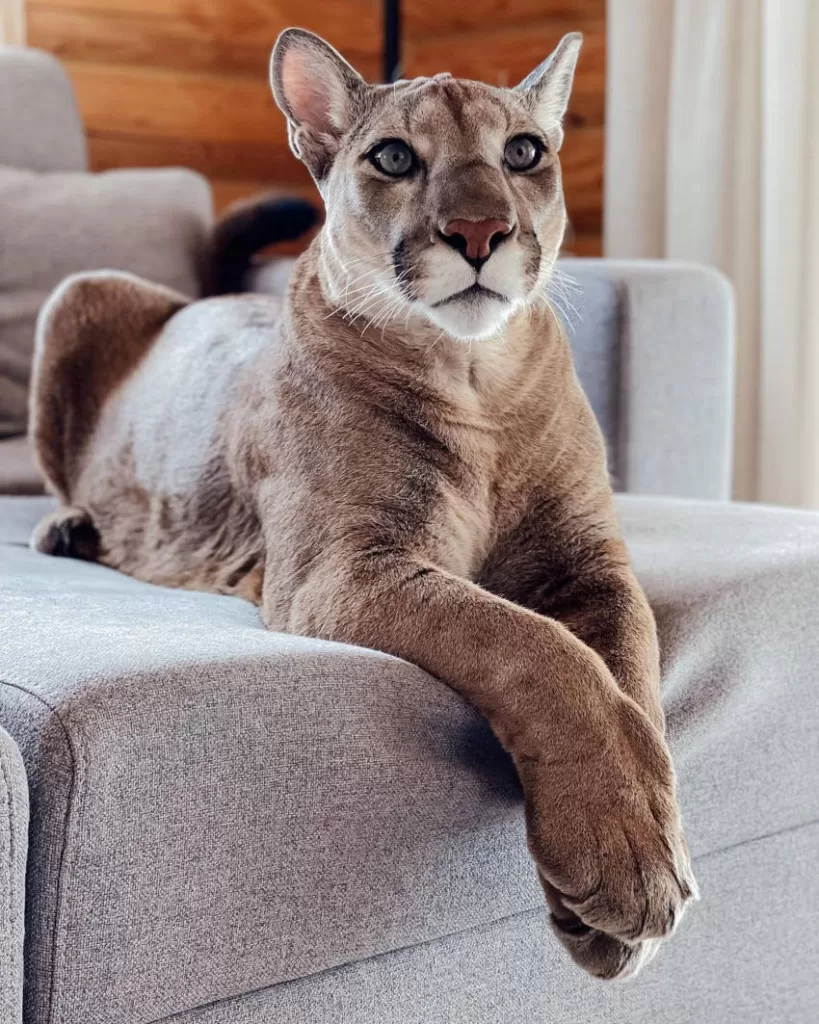
Habitat and Geographic Distribution
The cougar cat is a mammal that prefers habitats with an abundance of rodents, its main food source. This skilled predator can be found in a variety of environments, from dense forests to open areas.
Preferred Habitats
- Forests: These cats are excellent climbers and use trees both for resting and for ambushing prey.
- Grasslands: In open areas, cougar cats hide in tall vegetation while watching for rodents.
- Mountains: They are also found at high elevations, where the rugged terrain provides plenty of places to hide.
Current Geographical Distribution
The geographical distribution of the cougar cat covers a vast area. Originally, they were found all over the American continent, from north to south. However, habitat loss and hunting has drastically reduced its population in some regions.
- North America: They can still be found in some isolated locations in the western United States and Canada.
- Central America: The population is more stable here, especially in the humid tropical forests.
- South America: Cougar cats are still common in most areas of South America.
Factors Influencing Its Distribution
Several factors influence the distribution of puma cats:
- Diet : As top predators, they need an abundance of prey (mainly rodents) to survive.
- Competition : They avoid areas with large populations of other larger predators.
- Conservation : Protected areas provide safe haven for these individuals.
However, despite these challenges, cougar cats have shown remarkable adaptability. They are among nature’s toughest and most resilient mammals. Proper conservation of existing habitats and careful reintroduction into new habitats can help ensure these amazing cats continue to thrive well into the future.
By better understanding the habitat preferred by cougar cats and their current geographic distribution, we can take more effective measures to ensure their survival. It is vital that we strive to protect these extraordinary mammals and the wild landscapes they depend on.
Puma Cat and the Human Relationship
Human impact on cougar cat habitats
The human impact on cougar cat habitats is remarkable. Urban expansion, mainly in areas of Rio Grande, RS, has led to loss of habitat for this majestic gray animal. This resulted in the drastic reduction of the population of these cats over the years.
- Deforestation for construction of housing and infrastructure
- Pollution of rivers and streams that are a source of food
- Illegal hunting for its valuable fur
Interactions between humans and cougar cats
Interactions between humans and puma cats have been marked by potential conflicts. The fact that cats look scary with their pounds of muscle contributes to this. However, it is important to remember that these animals are more threatened by us than we are by them.
- Attacks on domestic animals: Some reports indicate that cougar cats may attack domestic animals.
- Direct Encounters: Although rare, there are documented cases of direct encounters between humans and cougar cats.
Conservation measures in place
Fortunately, there are several conservation measures in place to protect the cougar cat:
- Strict laws against illegal hunting
- Educational programs to make people aware of the importance of these animals
- Creation of nature reserves where they can live without human interference
Messi, a famous cougar cat kept as a pet in Russia, is a living example of this species’ ability to adapt to unnatural conditions if given the right conditions. But that must not be the fate of these magnificent predators.
In conclusion, although there are significant challenges in the relationship between humans and the puma cat, efforts have been made since many years to ensure its survival. It is imperative to continue these efforts to ensure that future generations can also appreciate the beauty of this amazing animal.
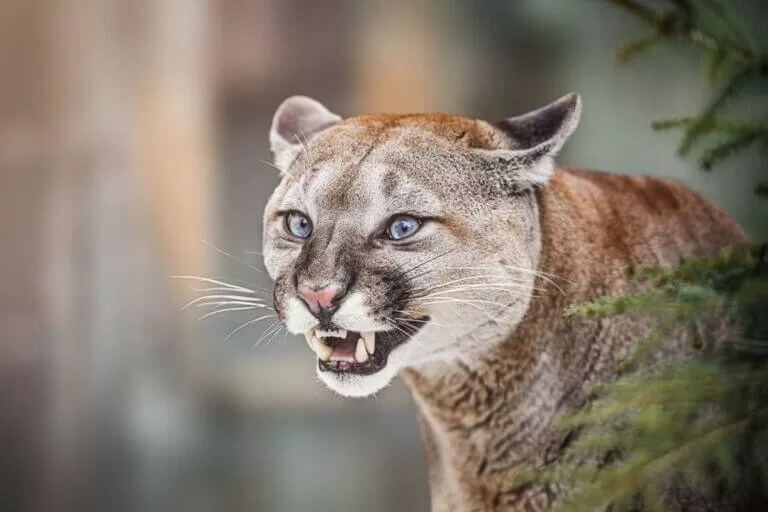
Rescue and Domestication Cases
Notable Cases of Rescue
In Brazil, there has been an increase in cases of rescue of wild puma cats. In a remarkable situation, the case of "De Oliveira", a cub was found in critical condition in the open forests of the state of Pará. After intensive days of veterinary care, the little puma survived and today lives in a sanctuary for rescued animals.
Another example is the case of "Aves de Cores", where a family of these cats was found living near a nursery in the interior of Paraná. With the help of the local population and the responsible bodies, the animals were rescued and relocated to a safer area.
Attempts at Domestication
While there are exciting stories about the rescue of these majestic cats, domestication still presents considerable challenges. Often, these animals are brought into human homes with good intentions, but end up suffering because they do not adapt to the domestic environment.
An example of this is the recent case in Rio Grande do Sul, where a family tried to raise a cougar cat as a domestic animal. Despite the efforts, the animal showed clear signs of stress and aggression after a few months.
Challenges of Domestication and Rehabilitation
The challenges associated with the domestication or rehabilitation of these animals are many:
- Constant need for space: Cougar cats are animals that need large spaces to live.
- Specific Diet: They have strict carnivore diets that can be difficult and expensive to maintain.
- Wild Behavior: Even when raised in captivity from a young age, they retain strong wild instincts.
In short, while continued efforts are being made to rescue and protect these beautiful cats in Brazil, domestication remains a major challenge. It is important to remember that each species has its own specific needs that must be met to ensure its well-being.
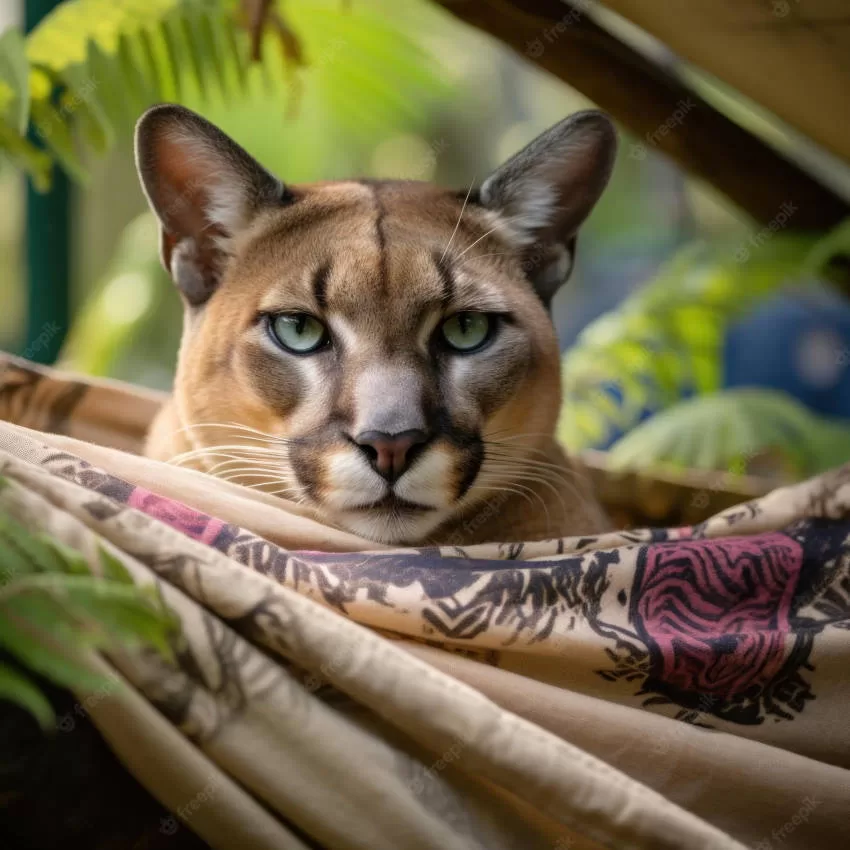
Identification and Registration of Specimens
Identifying specific individuals in the wild is a challenge. For the cougar cat, one of several species that inhabit our planet, methods vary. Some of the most common ones include:
- Direct Observation: Sometimes unique physical characteristics allow identification.
- Photography: High-resolution photos can reveal details such as skin patterns or scars.
- Microchips: Small devices implanted under the animal’s skin that transmit unique information about the animal.
Records of these identifications are kept in specialized databases. These systems use advanced technologies to ensure data accuracy and accessibility. For example, many use RFID (radio frequency identification) microchips to track individual animals.
These records play a crucial role in species conservation. Here are some ways they help:
- Population monitoring: Records allow scientists to track changes in the number of individuals in a given area.
- Study of behavior: With enough data, researchers can analyze behavioral patterns and better understand the needs of the species.
- Conservation planning: The information gathered can inform effective strategies to protect and preserve the species.
For example, if records show that the number of cougar cats is decreasing in a particular area, conservation efforts can be redirected to that region.
In summary, the identification and proper registration of specimens are essential tools in the fight for species conservation. Whether through direct observation or the use of modern technology like RFID microchips, every bit of information collected contributes to our overall understanding of the natural world and our ability to effectively protect it.
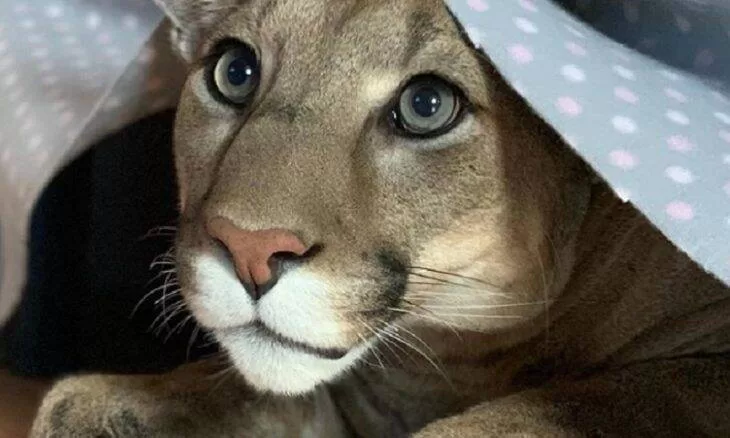
Conclusion: Detailed Study of the Puma Cat
After walking through the cougar cat’s fascinating journey, it’s easy to realize just how amazing this creature is. With unique physical characteristics and intriguing behavior, they are true survivors.
Its diverse habitat and wide geographic distribution show its adaptability. The relationship with humans, although complex, has seen positive advances thanks to rescue and domestication efforts.
The identification and registration of specimens are vital to ensure the preservation of this species. So now that you know all that, how about being part of the solution? Help in the conservation of puma cats! Contact local wildlife organizations to find out how you can contribute.
FAQ
What is the average size of a cougar cat?
An adult cougar cat can measure between 60-76 cm in length (not including the tail), with a weight ranging from 5-9 kg.
Are they aggressive?
Cougar cats are normally shy and avoid humans. However, like any wild animal, they can become aggressive if they feel threatened or cornered.
Where they live?
Cougar cats have a wide geographic distribution ranging from the rainforests of Central America to the prairies of northern Argentina.
Is it possible to tame a cougar cat?
While there are rescue cases where cougar cats have been kept in domestic environments, trying to tame them is not recommended. They are wild animals that need adequate space to live and hunt.
How can I help with the conservation of cougar cats?
There are many ways you can contribute to the conservation of these amazing cats. You can donate to organizations dedicated to protecting wildlife or participate in volunteer programs.
External References:
«Evaluation of the risk of extinction of the species in Brazil»

